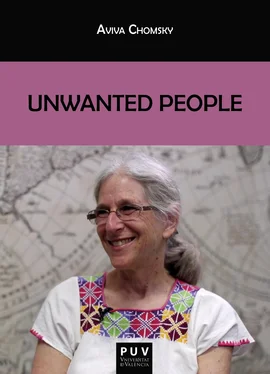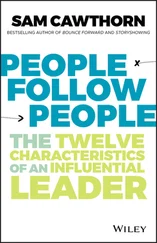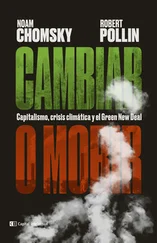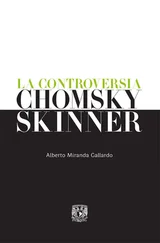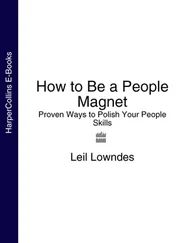Beyond the Factory
In the Power-One case, immigrant workers were fighting a large multinational. Immigrant labor issues become even more complex when workers are employed by members of their own ethnic community or in the precarious, fragmented service economy. The tightness of the ethnic community can be a strength, or a weakness, in workers’ organizing campaigns.
In some cases, worker centers challenge norms of ethnic unity in their fight for labor rights. Chen explained: “We are one of the few groups within the community that actually challenged Chinese-owned restaurants. We've been criticized with in the community, why are you hanging out dirty laundry? And to us it's kind of like, well, labor violations are labor violations... I have no problem saying that sometimes our people know how to exploit our own people the most. Meanwhile there's other issues around racism, and all that stuff, which we also against that, but it doesn't mean that we won't fight employers exploiting Chinese workers.
“And of course, sometimes it's like, if you look at it, a small employer versus a corporation, they make so much more profit, that may be true, but it doesn't mean that if you open a small restaurant workers should be exploited there. We're not asking, saying that oh, people need to be, whatever, we're asking for people's basic labor rights to be respected. So we have done a lot of organizing around reached out, in different restaurants, in Chinatown.”
Home Health Care: Common Ground with the SEIU?
By the turn of the twenty-first century, more and more of Chinatown’s workers had shifted from precarious positions in large manufacturing companies like P&L and Power-One to similarly precarious positions in Boston’s burgeoning service and especially health care economy. Immigrants made up 27 percent of Boston’s workforce, but they were 50 percent of those employed in hotels, nursing homes, and restaurants. 25
One fast-growing sector was the home health care industry—workers who provide in-home care for the elderly, disabled, and recovering. Most home health jobs do not require medical education or experience, and most workers earn barely over minimum wage. 26 The average wage is $20,000 a year, and one fourth of home health workers live in poverty. 27
Home health care employment doubled from one million in 2004 to 2 million workers nationwide by 2014, and continued to be one of the nation’s fastest-growing sectors, expected to rise to 5 million by 2020. Nine tenths of these workers were women, and half were people of color. 28 Boston was not immune to the trend: in Boston, home health care employment grew from 28,300 jobs in 2000 to 89,300 in 2016. 29 Nationally, about a quarter of home health workers were immigrants in 2017. 30 In Massachusetts, the rate was 34%. 31 “After the garment industry and then the electronic stuff were gone, if you don't want to work in a restaurant, most people go into home care,” Chen explained. “So [today] those are the bulk of where the Chinese workers are. I would say that there are like thousands of them.”
These Personal Care Assistants (PCAs), Chen explained, “are the people who go into elderly's homes to do chores, and that program was meant for MassHealth [the Massachusetts Medicaid program] to save money, instead of putting people into nursing homes, it could go up to like 60-70,000 dollars a year per person. So this is kind of like prevention and whatever.” In Chinatown, these companies tend to hire local workers. “So basically they're bringing people from the same kind of cultural/language background into helping their elderlies with their daily needs. That could include like chores, and sometimes help them with medicine, other times if they got injured, like bathing them, you know, with their daily needs so that they don't have to go into a nursing facility.”
The Century Foundation called the industry an “organizing nightmare.” 32 PCAs work individually and rarely come into contact with other workers. Some are contracted by private agencies, while some work directly for their clients, making it exceedingly difficult to identify a bargaining unit. Yet the fragmented nature of the industry means that PCAs are in many ways the new face of the working class. Thus home health care has become a key sector in which traditional unions and community organizations have sought to collaborate.
In Boston the roots of homecare organizing lay in the early 1980s, when the United Labor Unions, an independent union affiliated with the national Association of Community Organizations for Reform Now (ACORN) began to organize Boston’s African American and immigrant home care workers. Boston ULU organizers “discovered hundreds of disgruntled and militant African American, Latina, and Caribbean women working below the minimum wage for agencies with contracts from the state. ULU learned where to find these workers; how to follow the money trail; and how to take advantage of the structure of home care—its ties to the welfare state and the bonds between workers and clients generated by the labor process itself.” 33 These latter structural issues became very important to the organizing process.
The ULU soon affiliated with the SEIU, where it “helped revitalize organizing within that service industry giant.” 34 Likewise in New York, California, and Chicago, the SEIU and other unions deepened their experience in this sector so different from the traditional workplace. Organizing the workers meant organizing their clients and fighting in the political sphere for recognition and labor protections.
Internal struggles in the SEIU contributed to setbacks for this initial phase of home healthcare organizing. 35 But in the 1990s the SEIU launched a national campaign as part of the AFL-CIO’s drive to re-emphasize organizing. Mary Kay Henry, who became SEIU’s president in 2010, explained: “It's a sector of the economy that hasn't collapsed in the economic downturn and it can't be offshored.” “Homecare workers are the new face of labor,” added historian Eileen Boris. 36 By 2014 SEIU (which split from the AFL-CIO in 2005) claimed over 400,000 home healthcare workers, a full quarter of the national home healthcare workforce. The majority were in California, where these workers comprised 20% of the giant’s membership. 37
Part of this new effort was fought in legislatures and the courts. The SEIU argued that since Medicaid ultimately paid home health workers’ wages—by reimbursing the agencies that employed them—these workers should be recognized as public employees. California was the first state to agree, in a series of decisions culminating in 2003, and Massachusetts followed suit in 2006. 38 The courts have also debated whether unions can collect fees in lieu of dues from those covered by their contracts who decline to join the union. In contrast to the situation in Massachusetts and California, court rulings in Michigan and Illinois turned home health care into a virtual “right-to-work” industry. 39
By 2013, SEIU 1199 had organized some 30,000 Medicaid-reimbursed home health care workers in Massachusetts, and in 2015 Massachusetts became the first state in the nation to agree to raise their wage to $15 an hour (by 2018). 40 SEIU continued to mobilize thousands of low-wage workers to raise the state minimum wage to $15 for all workers as part of the union’s “Fight for 15” campaign, a national drive that also sought to raise SEIU’s profile in legislative and community efforts. 41
Fight for 15 and the Chinese Progressive Association played an important role in promoting a union organizing campaign at Medical Resources Home Health Corp in 2015. (Because they were not Medicaid-reimbursed, these workers labored outside the state bargaining unit.) The campaign illustrated some of the power as well as some of the challenges of the community/union organizing process.
Читать дальше
